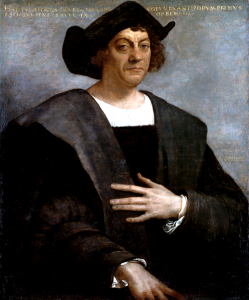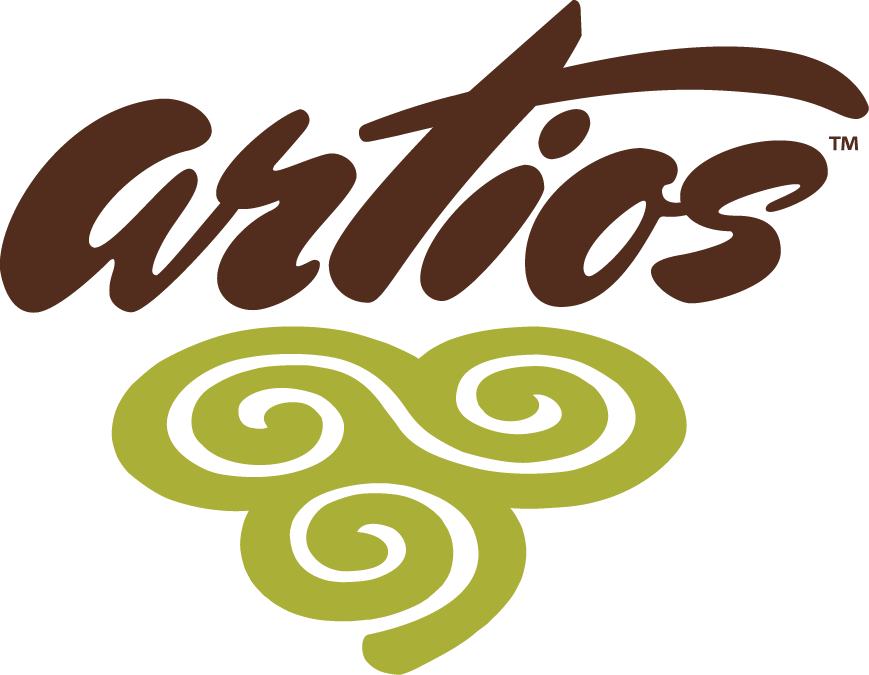[precontent] [one_third]
Unit 2: Colonization of the New World
[/one_third] [two_third_last]  [/two_third_last] [/precontent] [three_fourth] [box] [box_header]
[/two_third_last] [/precontent] [three_fourth] [box] [box_header]
Unit 2 [flag bg_color=”#d6e3bc” text_color=”#9d241a”]Elementary[/flag]
[/box_header] [box_content]
Unit Overview
- Subjects Covered
- Grammar, Literature, Composition, History
- Time Period
- Reformation and Revolutions
- Grade Level
- Elementary: 1 – 5
- Civilization
- Spanish, Native American, English
- Literature
- Robinson Crusoe – by Daniel Defoe
[/box_content] [box_content]
 Unit Description
Unit Description
[/box_content] [box_content]
Leading Ideas and Biblical Principles
[list type=”arrow”]
- History is HIS Story – God’s story of love, mercy, and redemption through Christ.
- He made known to us the mystery of his will according to his good pleasure, which he purposed in Christ, to be put into effect when the times reach their fulfillment—to bring unity to all things in heaven and on earth under Christ. — Ephesians 1:9-10
- God’s providential hand governs and times all events and provides for His Creation according to His plan and purposes.
- The God who made the world and everything in it is the Lord of heaven and earth and does not live in temples built by human hands. And he is not served by human hands, as if he needed anything. Rather, he himself gives everyone life and breath and everything else. From one man he made all the nations, that they should inhabit the whole earth; and he marked out their appointed times in history and the boundaries of their lands. God did this so that they would seek him and perhaps reach out for him and find him, though he is not far from any one of us.- Acts 17: 24 – 27
[/list] [/box_content] [/box] [box] [box_header]
Unit 2 Resources: [flag bg_color=”#d6e3bc” text_color=”#9d241a”]Elementary[/flag]
[/box_header] [box_content] [button id=”1″ link=”https://www.artioshcs.com/wp-content/uploads/2013/08/Early-Mod-Unit-2-Elem-Colonization-of-the-New-World-PRINT26-WWW.pdf” linking=”new-window” size=”medium” type=”simple” title=”maps”]Download Unit[/button] [button id=”1″ class=”1″ link=”http://upload.wikimedia.org/wikipedia/commons/thumb/3/38/Viajes_de_colon_en.svg/800px-Viajes_de_colon_en.svg.png” linking=”new-window” size=”medium” type=”simple” title=”maps”]Download Maps[/button] [button id=”1″ link=”http://www.phschool.com/atschool/ahon/history_interactive/mvl-1021/common_player.html” linking=”new-window” size=”medium” type=”simple” title=”maps”]Interactive Map[/button] [tabs type=”simple” position=”top-left”] [tab_title]Lesson One[/tab_title] [tab_content]
Lesson One Assignments:
- Read the article “Sir Walter Raleigh”.
- Define each vocabulary word in the context of the reading, and put the word and its definition in the vocabulary section of your notebook.
- After reading the article, summarize the story you read by either retelling it out loud to your teacher or parent or completing an appropriate notebook page. Either way, be sure to include the answers to the discussion questions and an overview of key people, dates, and events in your summary.
- Examine this picture of Columbus at http://www.loc.gov/pictures/item/2006676658/ and compare it to this picture of Columbus at http://www.loc.gov/pictures/resource/cph.3g04188/
- Focusing primarily on Columbus and the Native Americans, use a Venn diagram to highlight the similarities and differences in the two pictures.
Lesson One Discussion Questions:
- What is said about Sir Walter Raleigh?
- Did the Native Americans change their point of view towards the European settlers? Explain.
- What name did Queen Elizabeth give to the country?
- What did she do for Sir Walter Raleigh?
- What did Sir Walter then do?
- What American plants did the emigrants send him?
- What did he do with those plants?
- What happened to the Virginia settlement?
- What is said of the last days of Sir Walter Raleigh?
- Was Sir Walter’s attempt to settle Virginia successful?
[/tab_content] [tab_title]Lesson Two[/tab_title] [tab_content]
Lesson Two Assignments:
- Read the article “Captain John Smith”.
- Define each vocabulary word in the context of the reading and put the word and its definition in the vocabulary section of your notebook.
- After reading the article, summarize the story you read by either retelling it out loud to your teacher or parent or completing an appropriate notebook page. Either way, be sure to include the answers to the discussion questions and an overview of key people, dates, and events in your summary.
Lesson Two Discussion Questions:
- What can you tell about Captain John Smith before he went to Virginia?
- What happened to him on his way to Virginia?
- What did the emigrants do after they landed?
- What did most of the men want to do?
- What did Captain Smith want to do?
- What happened at Captain Smith’s trial?
- What happened to the settlers?
- What did some of them try to do?
- Who stopped them?
- Describe the Indians.
- What were the male Indian’s jobs? What were the female Indian’s jobs?
- What type of houses did they live in?
- Did they have guns?
- What kind of boats did they have?
- What happened to Captain Smith when he went in search of the Pacific Ocean?
- What did Pocahontas do for Captain Smith?
- What happened to Captain Smith that forced him to return to England?
- What three things did Captain Smith do for Virginia?
- What about his books and maps?
- Who did the Dutch ships bring to help grow tobacco?
- Why is Virginia sometimes called the “Mother of Presidents”?
[/tab_content] [tab_title]Lesson Three[/tab_title] [tab_content]
Lesson Three Assignments:
- Read the article “Captain Henry Hudson”.
- After reading the article, summarize the story you read by either retelling it out loud to your teacher or parent or completing an appropriate notebook page. Either way, be sure to include the answers to the discussion questions and an overview of key people, dates, and events in your summary.
- Watch the following videos:
Lesson Three Discussion Questions:
- Who was Henry Hudson?
- What did he try to find?
- What did the Dutch hire him to do?
- What did he call the river he discovered? Color this river blue in your book.
- Describe his journey up the river.
- Why did Hudson turn back?
- What did the Indians do to honor Captain Hudson?
- Where did the Indians think Captain Hudson came from?
- What is the river he discovered called now?
- What happened to Captain Hudson the next year?
- Why did the Dutch come to America?
- What was the first name the Dutch gave their new country? Why?
- Who were the “Sons of Liberty”? What did they do?
- What stands on Manhattan Island today?
- What would Hudson say if he could see New York City now?
[/tab_content] [tab_title]Language Arts[/tab_title] [tab_content]
Unit 2 Literature Assignment
- Read Chapters 7 – 12 in Robinson Crusoe (from “The Years Pass By” through “I Teach Friday”). If you are using an alternate version of this text, you will want to read roughly another one third of the book during this unit.
- As you are reading during this unit, focus your discussions on how Robinson Crusoe is seeing God’s provision for his needs. Do you think God is trying to teach him anything through his experience?
Unit 2 Composition Assignment
- In this unit we will continue working with friendly letters. Using the structure that you learned in the last unit, write a friendly letter as if you were Robinson Crusoe writing to a family member back home. Tell them about some of the adventures you’ve had and what you miss about home.
- Then, pretend that you have just received this letter from Robinson Crusoe, and write a friendly letter back to him. Include some advice to him to help keep him safe, and tell him what you miss about having him at home.
- If you are using this curriculum with a group of students, consider writing these letters back and forth to each other. If you are using this curriculum on your own, visit the Comments section of this unit’s lessons on the Artios Home Companion website to find some friends that might like to write back and forth with you.
Unit 2 Grammar Assignment
- Read the notes on Articles and Adjectives, beginning on page 4.
- Complete the corresponding exercises on the Artios Home Companion website.
[/tab_content] [tab_title]Resources[/tab_title] [tab_content]
VIDEOS ON THIS WEBSITE SHOULD BE PREVIEWED BY PARENTS BEFORE ALLOWING STUDENTS TO WATCH VIDEOS. SOME VIDEOS MAY CONTAIN INFORMATION ON SENSITIVE TOPICS.
Explorers:
Complimentary Sources:
- The Jamestown Online Adventure
- Rediscovering Historic Jamestown – This website is dedicated to the excavation and study of the historic Jamestown.
- Native American Culture
Videos:
The Science of Henry Hudson’s Exploration
Half Moon: Replica of Henry Hudson’s Ship
US History Overview – Jamestown to the Civil War
Bon Voyage
The Real Story of Christopher Columbus -(another view of the motivation behind the voyage of Christopher Columbus)
Leif Eriksson vs. Christopher Columbus
Christopher Columbus Sets Sail
Christopher Columbus’s Modern Ships
Ponce De Leon video by the Biography Channel Rembrandt Van Rijn (1607 – 1675)
[/tab_content] [tab_title]Arts[/tab_title] [tab_content] Raphael, The Prince of Painters, Part One Raphael, The Prince of Painters, Part Two Great Artists: Michelangelo http://nativeamerican-art.com/index.html http://explore-art.pem.org/themes/native-american-art [/tab_content] [/tabs] [/box_content] [/box]

Leave a Reply
Want to join the discussion?Feel free to contribute!